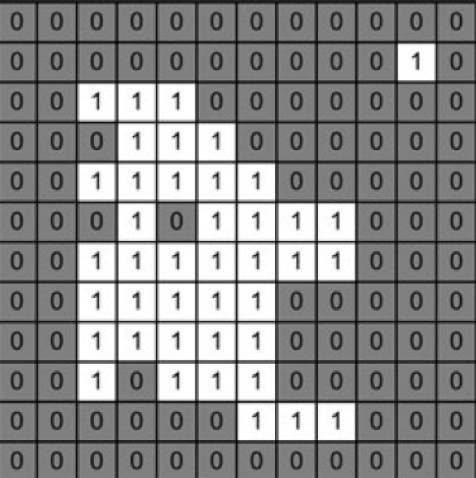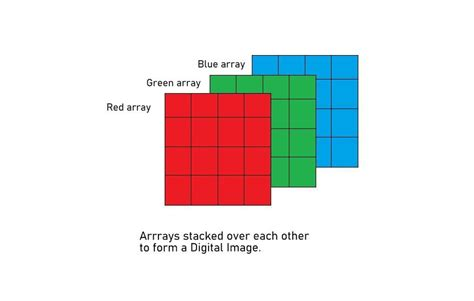注意:在這篇文章中,我們將僅使用灰階影像以使其易於理解。
影像可以被認為是值的矩陣,其中每個值代表像素的強度。影像格式主要分為三種:



濾鏡是用於透過應用某些操作來修改影像的工具。濾波器是一個在影像上移動的矩陣(也稱為內核),對其視窗內的像素值執行計算。我們將介紹兩種常見類型的濾波器:均值濾波器和中值濾波器。
均值濾波器用於透過對視窗內的像素值進行平均來減少雜訊。它將視窗中的中心像素替換為該視窗中所有像素值的平均值。 cv2.blur() 函數應用內核大小為 3x3 的均值濾波器,這意味著它會考慮每個像素周圍的 3x3 像素視窗來計算平均值。這有助於平滑影像。
import cv2 import matplotlib.pyplot as plt image = cv2.imread('McLaren-720S-Price-1200x675.jpg', cv2.IMREAD_GRAYSCALE) # Applies a Mean Filter of size 3 x 3 blurred_image = cv2.blur(image, (3, 3)) plt.subplot(1, 2, 1) plt.imshow(image, cmap='gray') plt.title('Original Image') plt.axis("off") plt.subplot(1, 2, 2) plt.imshow(blurred_image, cmap='gray') plt.title('Mean Filtered Image') plt.axis("off") plt.show()

中值濾波器用於透過將每個像素的值替換為視窗中所有像素的中值來減少雜訊。它對於消除椒鹽噪音特別有效。 cv2.medianBlur() 函數應用內核大小為 3 的中值濾波器。此方法將每個像素替換為其鄰域像素值的中值,這有助於在去除雜訊的同時保留邊緣。這裡,內核尺寸越大,影像越模糊。
import cv2 import matplotlib.pyplot as plt image = cv2.imread('McLaren-720S-Price-1200x675.jpg', cv2.IMREAD_GRAYSCALE) # Applies a Median Filter with a kernel size of 3 blurred_image = cv2.medianBlur(image, 3) plt.subplot(1, 2, 1) plt.imshow(image, cmap='gray') plt.title('Original Image') plt.axis("off") plt.subplot(1, 2, 2) plt.imshow(blurred_image, cmap='gray') plt.title('Median Filtered Image') plt.axis("off") plt.show()

您可以建立自訂濾鏡以對影像套用特定操作。 cv2.filter2D() 函數可讓您將任何自訂核心套用至影像。 cv2.filter2D() 函數將自訂核心(濾鏡)套用到影像。內核是一個矩陣,定義對像素值執行的操作。在這個例子中,內核根據指定的值增強了影像的某些特徵。
import cv2 import numpy as np import matplotlib.pyplot as plt image = cv2.imread('McLaren-720S-Price-1200x675.jpg', cv2.IMREAD_GRAYSCALE) # Define a custom filter kernel kernel = np.array([[2, -1, 5], [-5, 5, -1], [0, -1, 0]]) filtered_image = cv2.filter2D(image, -1, kernel) plt.subplot(1, 2, 1) plt.imshow(image, cmap='gray') plt.title('Original Image') plt.axis('off') plt.subplot(1, 2, 2) plt.imshow(filtered_image, cmap='gray') plt.title('Filtered Image') plt.axis('off') plt.show()

注意:在程式碼片段中,在分配閾值影像時,您將看到 _ ,影像。這是因為 cv2.threshold 函數傳回兩個值:使用的閾值和閾值化影像。由於我們只需要閾值影像,因此我們使用 _ 來忽略閾值。
閾值處理透過根據條件設定像素值將影像轉換為二值影像。閾值技術有多種類型:
此方法為整個影像設定一個固定的閾值。值高於閾值的像素設定為最大值 (255),低於閾值的像素設定為 0。 cv2.threshold() 函數用於簡單閾值處理。強度大於 127 的像素設定為白色 (255),強度小於或等於 127 的像素設定為黑色 (0),產生二值影像。
import cv2 import matplotlib.pyplot as plt image = cv2.imread('McLaren-720S-Price-1200x675.jpg', cv2.IMREAD_GRAYSCALE) _, thresholded_image = cv2.threshold(image, 127, 255, cv2.THRESH_BINARY) plt.subplot(1, 2, 1) plt.imshow(image, cmap='gray') plt.title('Original Image') plt.axis("off") plt.subplot(1, 2, 2) plt.imshow(thresholded_image, cmap='gray') plt.title('Thresholded Image') plt.axis("off") plt.show()

Otsu's method determines the optimal threshold value automatically based on the histogram of the image. This method minimizes intra-class variance and maximizes inter-class variance. By setting the threshold value to 0 and using cv2.THRESH_OTSU, the function automatically calculates the best threshold value to separate the foreground from the background.
import cv2 import matplotlib.pyplot as plt image = cv2.imread('McLaren-720S-Price-1200x675.jpg', cv2.IMREAD_GRAYSCALE) _, otsu_thresholded_image = cv2.threshold(image, 0, 255, cv2.THRESH_BINARY + cv2.THRESH_OTSU) plt.subplot(1, 2, 1) plt.imshow(image, cmap='gray') plt.title('Original Image') plt.axis("off") plt.subplot(1, 2, 2) plt.imshow(otsu_thresholded_image, cmap='gray') plt.title("Otsu's Thresholded Image") plt.axis("off") plt.show()

In Mean Adaptive Thresholding, the threshold value for each pixel is calculated based on the average of pixel values in a local neighborhood around that pixel. This method adjusts the threshold dynamically across different regions of the image. The cv2.adaptiveThreshold() function calculates the threshold for each pixel based on the mean value of the pixel values in a local 11x11 neighborhood. A constant value of 2 is subtracted from this mean to fine-tune the threshold. This method is effective for images with varying lighting conditions.
import cv2 import matplotlib.pyplot as plt image = cv2.imread('McLaren-720S-Price-1200x675.jpg', cv2.IMREAD_GRAYSCALE) mean_adaptive_thresholded_image = cv2.adaptiveThreshold(image, 255, cv2.ADAPTIVE_THRESH_MEAN_C, cv2.THRESH_BINARY, 11, 2) plt.subplot(1, 2, 1) plt.imshow(image, cmap='gray') plt.title('Original Image') plt.axis("off") plt.subplot(1, 2, 2) plt.imshow(mean_adaptive_thresholded_image, cmap='gray') plt.title('Mean Adaptive Thresholded Image') plt.axis("off") plt.show()

Gaussian Adaptive Thresholding computes the threshold value for each pixel based on a Gaussian-weighted sum of the pixel values in a local neighborhood. This method often provides better results in cases with non-uniform illumination. In Gaussian Adaptive Thresholding, the threshold is determined by a Gaussian-weighted sum of pixel values in an 11x11 neighborhood. The constant value 2 is subtracted from this weighted mean to adjust the threshold. This method is useful for handling images with varying lighting and shadows.
import cv2 import matplotlib.pyplot as plt image = cv2.imread('McLaren-720S-Price-1200x675.jpg', cv2.IMREAD_GRAYSCALE) gaussian_adaptive_thresholded_image = cv2.adaptiveThreshold(image, 255, cv2.ADAPTIVE_THRESH_GAUSSIAN_C, cv2.THRESH_BINARY, 11, 2) plt.subplot(1, 2, 1) plt.imshow(image, cmap='gray') plt.title('Original Image') plt.axis("off") plt.subplot(1, 2, 2) plt.imshow(gaussian_adaptive_thresholded_image, cmap='gray') plt.title('Gaussian Adaptive Thresholded Image') plt.axis("off") plt.show()

以上是Python 電腦視覺簡介(第 1 部分)的詳細內容。更多資訊請關注PHP中文網其他相關文章!




